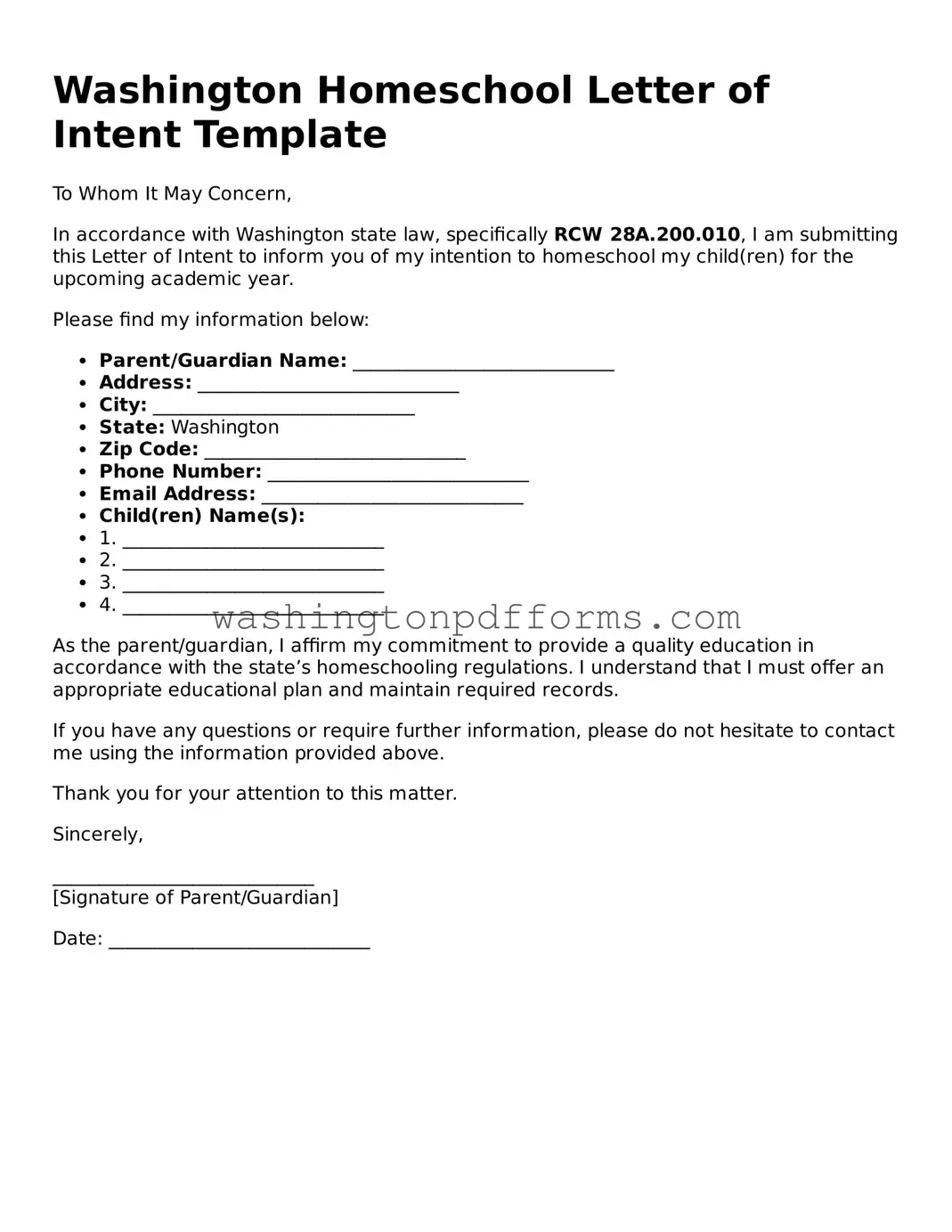Attorney-Approved Washington Homeschool Letter of Intent Template
The Washington Homeschool Letter of Intent is a formal document that parents or guardians submit to notify the state of their intention to homeschool their children. This letter serves as an essential step in the homeschooling process, ensuring compliance with state regulations. By completing this form, families can begin their educational journey outside of traditional school settings.
Make My Homeschool Letter of Intent Online
